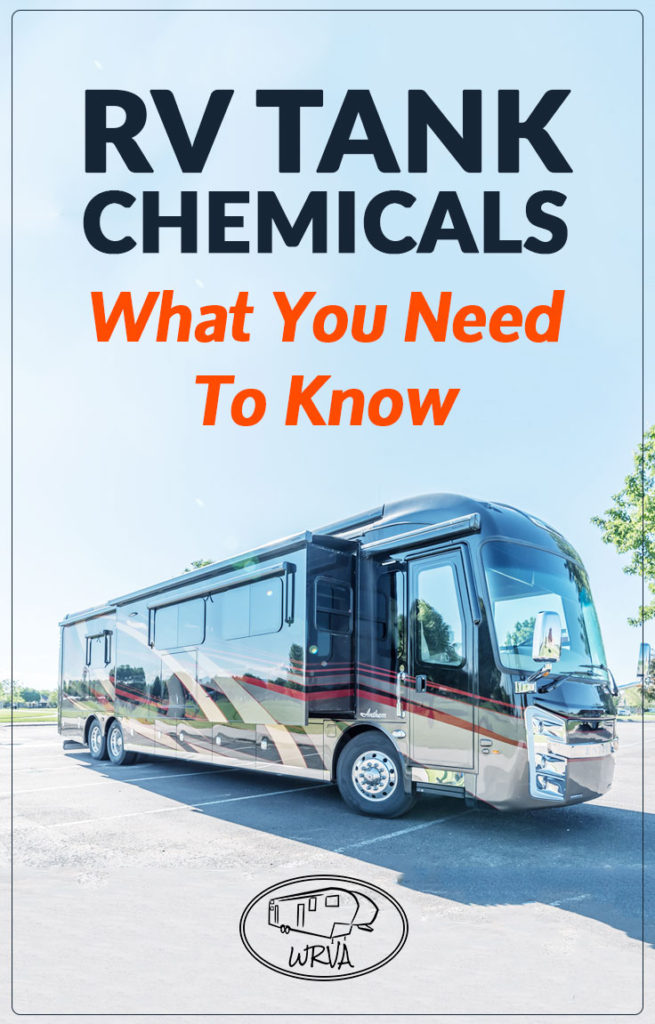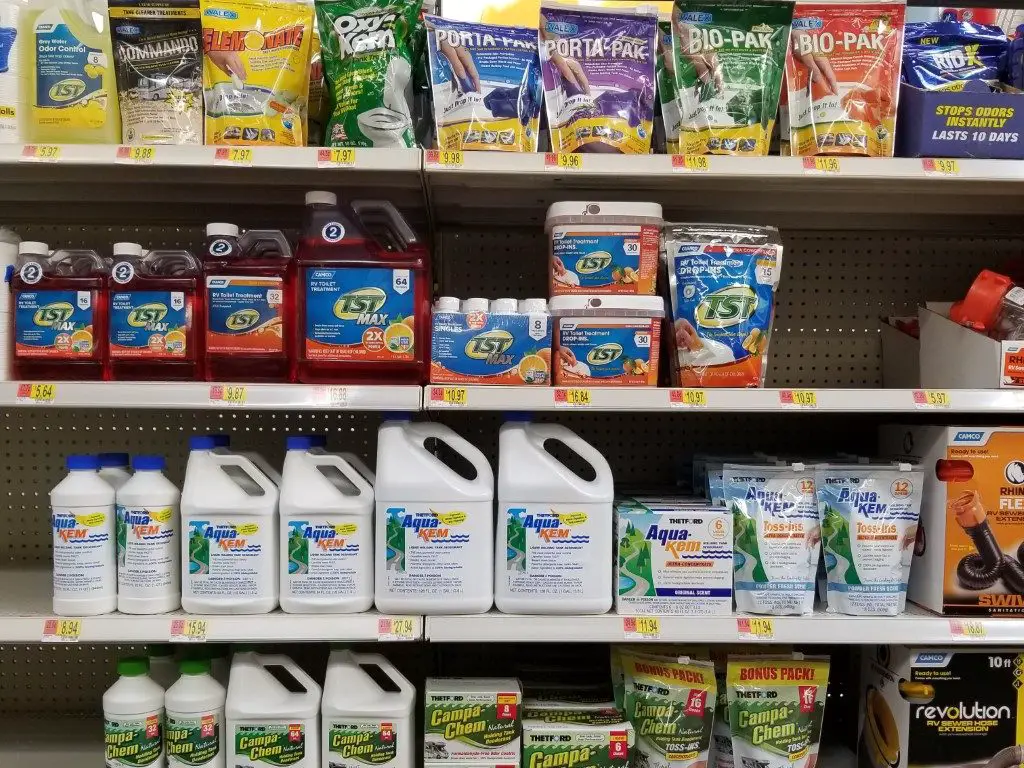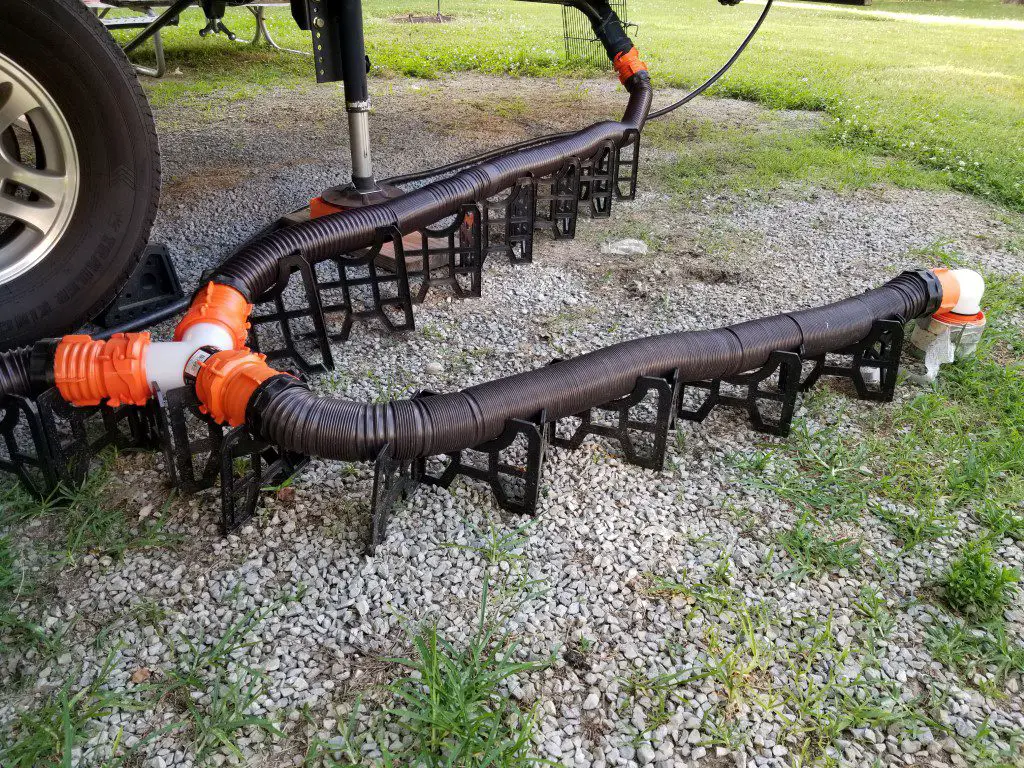Once you decided you didn’t want to sleep on the ground in a tent, it probably didn’t take too much longer to also decide you didn’t care for the long, cold walk in the dark to the campground restrooms. Or, realizing too late your 6-year old went on her own and got lost at 3:15 in the morning. There’s a very good chance the RV you purchased to alleviate all these problems has at least one toilet in it. The convenience of having a working toilet in your RV is hard to beat, but treating the waste in your camper’s tanks is one new task you need to be aware of. Let’s take a look at how often you should use tank chemicals and what they really do.
TV Toilet-Tank Chemical Basics
There are 3 main types of RV Toilet Chemicals. Powder, Liquid and packets. Each type has many variations, but they all serve the same purpose, to help the waste in your RV’s tanks break down and keep things odor free. Read on to get a better understanding of how they work and which option is right for you.
How Often Should RV Tank Chemicals be Used?
You should add new tank chemicals after each time you empty your RV’s waste tanks. Adding a small amount of water and a fresh dose of tank chemicals after each dump is the best way to keep your tanks clean and free from nasty odors. The only exceptions to this is if you are winterizing your RV, in that case you want to leave the tanks empty to avoid damage from freezing water.
It’s in the Tank
Unlike your toilet at home which uses a LOT of water to flush the waste away, the toilet in your RV uses a very small amount of water to store the waste in one of two different holding tanks. Black and grey. For tips on how to empty your tanks check out this article.
Grey Tank
Connected to the grey tank are your kitchen and bathroom sink and shower from which drain grey-looking soapy water. You should avoid allowing solid food waste to collect in the grey tank. Check this article out to see why you shouldn’t leave your gray tank valve open.
Black Tank
Connected to the black tank is your toilet from which drains…well, you know.
Understanding RV Waste Water Management
To keep both systems working without the hassle and mess of clogs and backups or odor, it’s critical to remember the waste in your RV is not flushed away in sewer pipes like at home, but rather stored in tanks just a few feet away from the source. That means there are two critical objectives to managing your waste:
- Breaking down solid waste
- Eliminating odor.
Solids vs. Liquids
- The physics of the operation of waste holding tanks is reasonably simple. They start out empty, then they fill up and finally you must empty them. Easy, right?
- Well, yes if you understand that waste flows though pipes a lot better if it’s liquid than if it’s solid, so that’s why breaking down solid waste is so critical.
- Also, solids are much more likely to stick to the sides of the tank and therefore not wash away. That is a problem you should really avoid at all costs, because to fix it is really, really unpleasant.
Types of RV Tank Chemicals
Logon to Amazon, enter keyword “RV toilet chemicals” and you will get 489 results divided among a dozen or more brands. Then, select only those results with reviews of 4 stars or higher and there will be 226 popular products from which to choose. There are primarily 3 types of RV holding tank treatment products:
- Liquids
- Powders
- Packets
Liquids & Powders
- Pros: Start working almost immediately upon contact with water in the tank
- Cons: Require premeasuring and can possibly spill
Packets
- Pros: Premeasured and much easier to use – just toss them in
- Cons: Take a little longer to start working
Some products are very sensitive to moisture so take care to wear gloves when using them
Features
The best products are biodegradable, don’t contain formaldehyde and should not stain your toilet. Some claim to effectively break down standard household-type toilet paper while others don’t. Also, some don’t optimally perform in very hot or cold temperatures than others.
What They Do and Why
For the most part, the reviews rave about how virtually all these products break down waste and control odors and to do this, most of these most popular products rely on 2 things: enzymes and bacteria.
Enzymes
Enzymes are biological molecules that speed up the rate of virtually all chemical reactions that take place within cells. What that means to us is enzymes are very effective in breaking down solid waste. However, what they don’t do well is control odor.
Bacteria
Bacteria also break down solid waste and so long as they are the right kind of bacteria can also be very effective at limiting unpleasant odor in the process. We have bacteria in our bodies which can keep our immune systems in balance.
- Those found in your gut, where there isn’t much oxygen, are called anaerobic bacteria which produce hydrogen sulfide gas. That’s what causes the nasty smell when food spoils and waste in your black tank goes untreated.
- The best RV toilet chemicals use chemicals to convert the anaerobic bacteria into aerobic bacteria which use oxygen to digest solid waste and therefore don’t produce hydrogen sulfide gas. Some add fragrance and others don’t. Either way, that means no funky smells.
Most Popular RV Toilet Chemicals
Here is a very short list (with links) of some of the most popular options. Each option below is a different type, I suggest trying them all and then deciding which is best for you.
- POWDER – HAPPY Campers Organic RV Holding Tank Treatment
- LIQUID – Camco TST Ultra-Concentrated RV Toilet Treatment (this is what I use)
- PACKETS – Walex Porta-Pak Holding Tank Deodorizer Drop-Ins
Using RV Tank Chemicals
Whichever type or brand product you choose, always start by adding 3 to 4 gallons of water to the empty tank to avoid allowing clumps of solid waste to form which can cause your gauges to be inaccurate, or; even worse, clogs. With water in the tank, just press the toilet flush valve, toss in the powder, liquid or packets and you are good to go.
Treating your RV’s Tanks with Household Products
If you want to take a do it yourself approach to treating the waste in your black and grey tanks, you can try that too. Below are two popular “recipes” using household products that can help keep your tanks fresh and clean.
- Combine at a ratio of 1:2liquid laundry detergent or dish soap and water softener along with lots of water. This is known as The Geo Method. The theory is the water softener makes the solid waste slippery which prevents it from sticking to the sides and bottom of your tank and the detergent controls odor. However, it should be noted the solid waste is not broken down.
- Combine equal parts of powdered Borax laundry detergent, baking soda and citric acid which becomes almost like an effervescent grenade as soon as the mixture comes in contact with water. To use, partially fill your toilet with water, pour in about 1 cup of the mixture and immediately flush. When combined with the water already in the tank, the cleaning action will continue for some time. You can also use this process to clean your grey tank.
Avoid These

Finally, you can make the job of cleaning and sanitizing your holding tanks whole lot easier by flushing or draining any of the following items:
- Heavy Household toilet paper (although some products say it’s okay)
- Paper towels or napkins
- Sanitary napkins
- Cooking oil or fatty foods
Just Like at Home
Keeping the toilet clean and smelling good is an essential part of good housekeeping. It’s not hard and simply should be on of the first check-boxes on your list of things to do when setting up and maintaining a neat and tidy campsite. If you do it early and often and use lots of water to create a good base for the treatment product to work, your time in the great outdoors will still be just a little bit like home.
Thanks For reading, If you found this article helpful, please take a moment and share it on your favorite social network.
Happy Camping



Where you mention cleaning your RV toilet, what toilet cleaners are safe? What I mean to say is, I’ve read even mixing two different household toilet cleaners can cause “problems”. Perhaps there is recommendations on the RV toilet chemicals? Having a sudden build up of gasses in a confined space could lead to a sh… Problematic day.
Cameron,
Mixing bleach and ammonia is one of the biggest problems with household chemicals.
As long as you avoid putting both in your tank you should be fine.
Thanks,
Jason
What if you do not use your Black tank and leave it empty is there any problems with it being empty all the time of water chemicals?